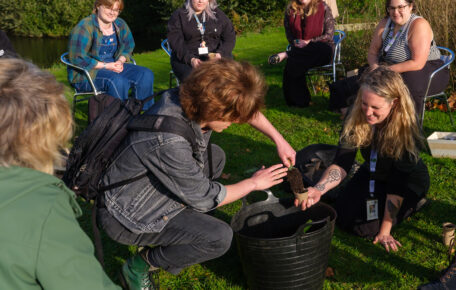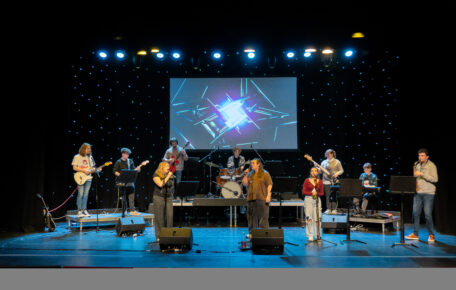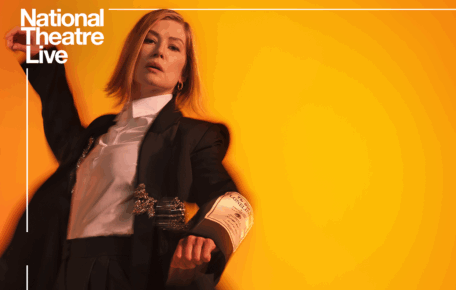
Reflection: Home is Where The Art Is
This year set off with our 'Home Is Where The Art Is - Spring 2025' season.
Artists David Rosenberg and Glen Neath have been making work together on and off since 2011. In 2016 they invited producer Andrea Salazar to work with them on creating a series of dark shipping container shows, using immersive experiences to explore fear and anxiety and DARKFIELD was born. We spoke with Glen Neath about DARKFIELD’s latest touring container show FLIGHT and the inspiration behind it.
LPAC: DARKFIELD are at the forefront of using binaural 360 degree sound in theatre but where do they get their ideas from?
Neath: Well, the shows always grow out of our policy of placing each audience member at the centre of the experience. We then explore ideas that suit our use of darkness as a tool to free the imagination. For instance, FLIGHT began out of our desire to put an audience on a replica aeroplane. And that gave us a license to have some fun with the fears and anxieties around flying.
LPAC: But despite the sensory effects FLIGHT is definitely no flight-simulator?
Neath: No, not in a traditional sense, although audiences really do feel like they are taking off, this is more a simulator of multiple outcomes. In making the show, we read David Deutsch’s The Fabric of Reality and this inspired our narrative around the possibility that a number of scenarios might actually be playing out at the same time. David Deutsch’s book, is the physicist’s attempt to draw together contemporary theories of how we experience the universe, and in a similar way FLIGHT is a coming together of theatre and Quantum Mechanics. “Specifically the many-world’s theory of the Multi-verse,” the idea proposing that every time there is more than one possible outcome, all of them occur, simultaneously. Countless worlds of varying similarity where anything that can happen is already happening – in FLIGHT you’re on a plane, there’s a couple of versions of the slightly unhinged captain on the loose, both trying to play out a different outcome… what could possibly go wrong?
LPAC: Certainly, audiences feel directly immersed in the alternative outcomes, and without giving anything away, one does feel that maybe what we are experiencing is unique to us – a technique that I assume is deliberate?
Neath: Both David and myself are interested in the role of an audience in the theatrical event, we always endeavour to place everyone in the container at the centre of an unfolding narrative. This is the key to the work. We don’t stage plays, we formalise an idea around how an audience member will engage with the narrative and then work outwards. On this occasion we hope that how we take audiences to their ‘destination’ is new and unexpected – and makes them glad to feel alive!”

A day long event focused on social prescribing, with a spotlight on young people’s voices and their mental health and wellbeing.

Join student performers from the University of Lincoln’s Music degree programme for three evenings of music from across genres and eras.

Oscar-nominated Rosamund Pike (Gone Girl, Saltburn) is Jessica in the much anticipated next play from the team behind Prima Facie.
Stay in touch by signing up to our mailing list
Enter your details below to subscribe to our newsletter and receive exclusive offers, event announcements, projects and news